
Student Projects
VG100
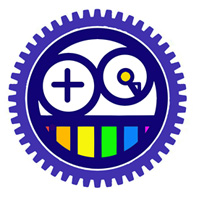
Object-collecting and Unloading Car
Instructors: Dr. Mian Li, Dr. Irene Wei
Team Members: Peiqi Chen, Tianle Jiang, Wentao Zhou, Zhenjie Sun, Zipei Zhao
Project Video
Team Members
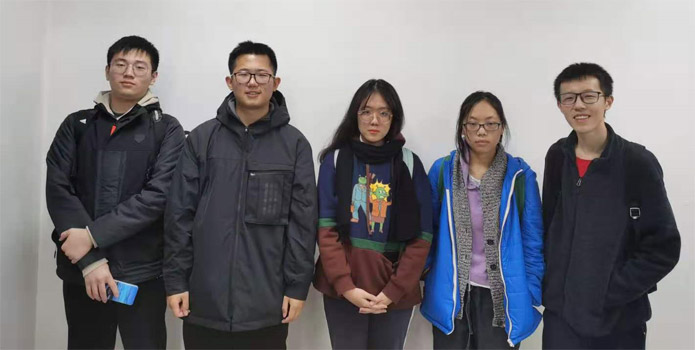
Team Members:
Peiqi Chen, Tianle Jiang, Wentao Zhou, Zhenjie Sun, Zipei Zhao
Instructors:
Dr. Mian Li, Dr. Irene Wei
Project Description
Problem
After starting to go to the lab, we get to do experiments with a variety of small parts that are easy to get lost. This also led us to think about the every-day objects, such as smaller toys that once are spilt or dropped on the ground, can be a lot of trouble to pick up. Though there are some sweeping robots in the market, they aren’t able to collect these things or can’t keep collecting because they can’t pour objects out.
Concept Generation
Our goal is to build a robot that helps pick up small objects and collect them together. The robot can pick up objects using the brush in front of it. Then the objects go up the slope and get into the box. Later, the box can be shifted with the help of pin rack and gear and therefore objects can be poured out.
Design Description
The robot that can efficiently and effectively collect small objects relies on both the hardware and the software. For the hardware part, the brush in front of the car is controlled by a motor so that it can keep rotating and pick up small objects. Then they can get into the box through the slope. The box can rise up because the gears are controlled by engines and they can drive the pin racks to go up. Pin racks then bring the box to lift and form a slope so that objects inside the box can be poured out easily. For the software part, we use bluetooth remote control so that the car can run to the place where it is needed to collect things.The hardware design is shown in figure 1 and the software design is shown in figure 2.
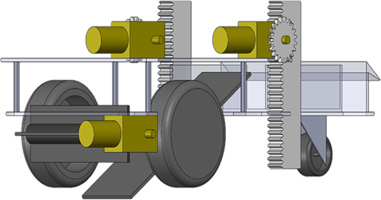
Fig. 1 The structure of the car
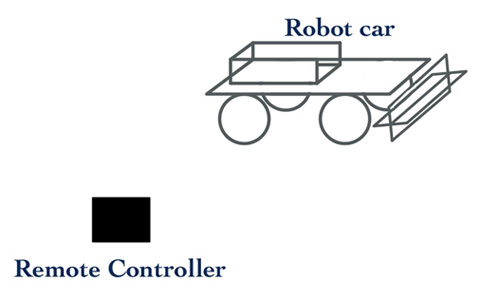
Fig. 2 The software part
Modeling and Analysis
To realize our project, we have three parts of work. Firstly, we make a plastic brush to collect objects. Because we want those objects to get into the box, we connect the brush with an engine so that it can roll. To ensure that objects can smoothly get into the box instead of dropping out halfway, we put a slope between the brush and the box. Secondly, we use pin racks and gears to lift the box. Gears are controlled by engines to rotate. Finally, we use bluetooth remote controller to control the move of the car so that it can directly run to the place with objects to collect. This can also avoid the car crashing into big obstacles. After these three steps, the car is almost completed.
Validation
We do a sample test by letting our car collect small balls in an area. The diameter of the balls is about 1 centimeter. The process is shown in figure 3.
After several adjustments of the speed of the engine controlling the gears and the engine controlling the brush and the dip angle of the slope, the car is able to collect these small balls and pour them out. Finally, the car works well with these small balls. To make the car useful more generally, we should change objects of more different sizes later on.
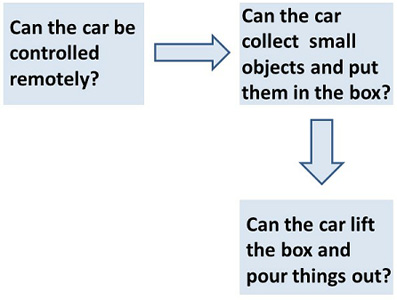
Fig. 3 Process of validation
Conclusion
The project collects these small items and put them in place, which save us time. This function can also be used to sweep up sharp particles like a piece of broken glass that save us from potential injuries. Therefore, it is a good method to collect smaller items on the ground efficiently and place them orderly, which will save us from the trouble of cleaning-up.
Acknowledgement
Dr. Mian Li and Dr. Irene Wei from the UM-SJTU Joint Institute;
Teaching Assistants Fubo Qi, Hanyang Feng, Sheng Qiao and Xiaoxuan Wang for VG100 at UM-SJTU Joint Institute.
Teaching Assistants Fubo Qi, Hanyang Feng, Sheng Qiao and Xiaoxuan Wang for VG100 at UM-SJTU Joint Institute.
More project information, please contact: mianli@sjtu.edu.cn
irene.wei@sjtu.edu.cn
727749815@sjtu.edu.cn
kevinfeng2000@sjtu.edu.cn
bangbang_qs@sjtu.edu.cn
wangxiaoxuan2018@sjtu.edu.cn
UM-SJTU JOINT INSTITUTE